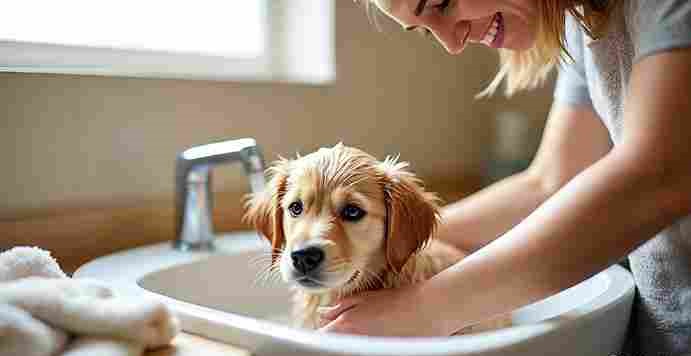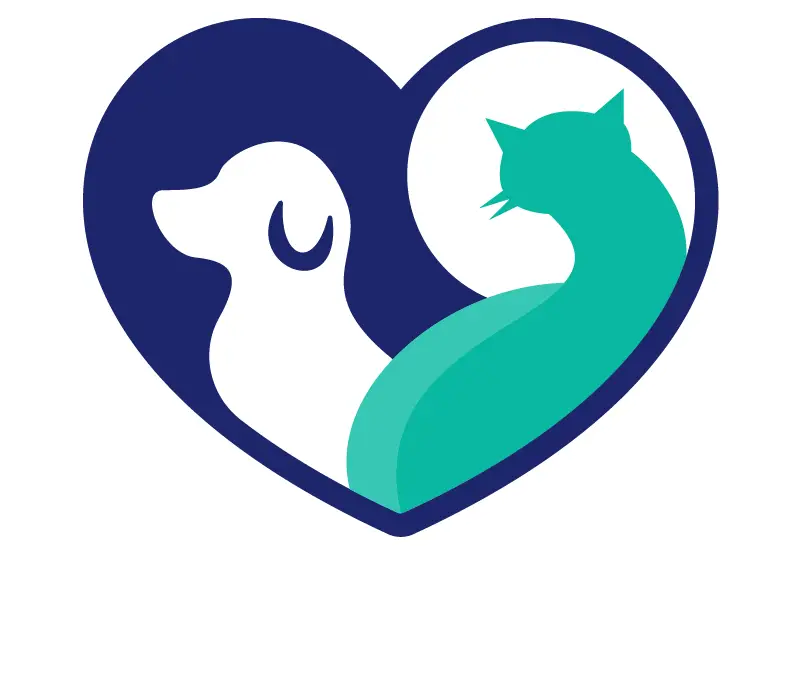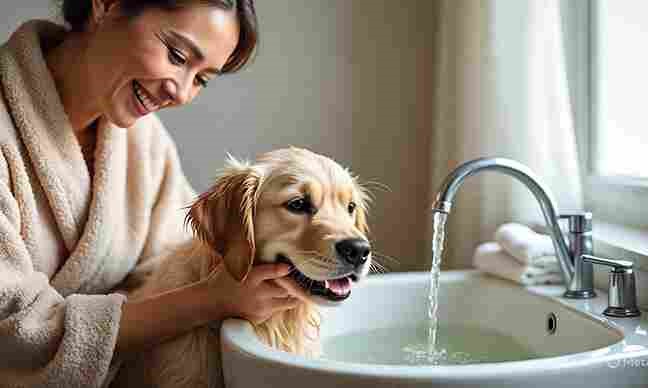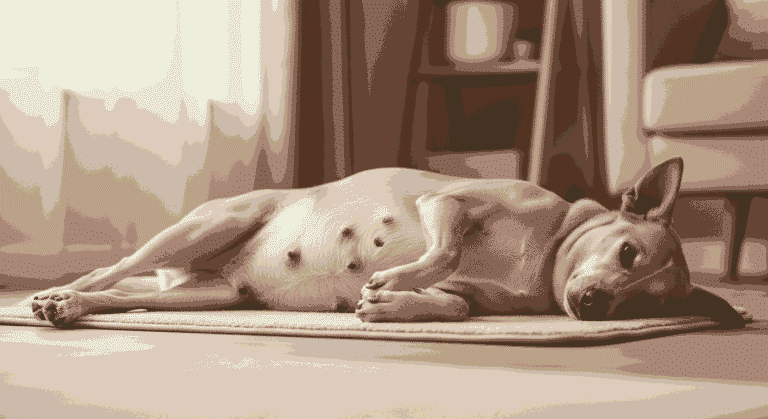You shouldn’t wash a puppy younger than eight weeks old unless you really have to. Most people can bathe their healthy dog once a month or once every one to three months. Instead of following a tight plan, bathe your puppy when they get dirty and smelly because of their lifestyle and coat type. Use a shampoo made just for puppies and make it a fun experience so you don’t strip natural oils or irritate the skin.Purina
Quick Summary
- Bathe puppies about once per month, except for breeds with special needs (e.g. hairless breeds).
- Watch for signs like odor, dirt, or sticky/matted fur.
- Start full-bath care at 8 weeks old or older.
- Always use puppy-formulated shampoo; never human products.
- Between baths: brush, wipe, or use dry shampoo.
Table of Contents
Signs Your Puppy Needs a Bath
To know when it’s time for a bath, look for:
- A strong or bad smell
- Fur that is greasy, sticky, or matted
- Dirt, dust, or mud that can be seen
- Rolled in something that smelt bad, like trash or waste
These are consistent with guidance from AKC: bathing frequency depends heavily on how dirty the puppy is and its lifestyle. American Kennel Club
A puppy’s environment greatly influences how often it needs a bath. Puppies who play outside, get muddy, swim, or roll around will naturally need baths more often. Indoor, low-activity pups often require fewer full baths. Vca+1
Coat Type and Breed Differences
- Hairless breeds (e.g., Chinese Crested, Xoloitzcuintli) often need more frequent bathing (even weekly) due to exposed skin and oil buildup. American Kennel Club
- Long-haired breeds tangle easily and may need more grooming + occasional baths to avoid mats. American Kennel Club+1
- Double-coated breeds (e.g. Huskies, German Shepherds) should avoid too frequent baths; more brushing helps protect their natural insulation. American Kennel Club+1
Indoor or Outdoor Puppy? Bathing Needs Explained
It depends on how your dog lives and what they do, and how often you should wash them.
- It is simple if your puppy mostly stays inside, they don’t need to be bathed very often, maybe once a month or less.
- If your puppy likes to roll around in dirt, grass, or mud, you might have to bath them every two weeks or whenever they get dirty.
- If your puppy is active and goes to dog parks, plays with other pets, or spends a lot of time outside, you may need to bathe them more often to get rid of dirt, allergies, and bacteria.
👉 You don’t have to wash your dog every time they become a bit dirty between baths. Instead of washing, use a damp cloth or a dry shampoo made for puppies to keep their coat clean without giving them too many baths.
Seasonal and Weather Factors
Bathing routines should adjust with the seasons:
- In the rainy season, there is more dirt, which means more rinses or faster cleans.
- In the winter, you should bathe less often to keep the skin from being dry and cracked.
- After swimming in lakes, ponds, or pools, clean off any chlorine, algae, or other dirt.
These adjustments are supported by Purina and VCA advice. Purina+1
Skin Sensitivity and Health Needs
Some puppies have skin that needs specific care. If your puppy has a medical condition, is allergic, or has sensitive skin, use shampoos that your vet recommends or that include medicine in them. If the skin is dry, red, and itchy, you may need to bathe less often or use a different kind of lotion. Always talk to a vet. American Kennel Club+1
Scientific Reference Insight
Studies in veterinary dermatology suggest that a dog’s skin pH is more neutral (around 6.5–7.5) than a person’s (5.5). Using shampoos too often, especially ones that aren’t made for dogs, may throw off this balance, which can cause the skin barrier to break down and make irritation more likely.
What to Do Between Baths
Between full baths:
- Brush regularly to remove loose fur and dirt
- Wipe paws, belly, or coat with a damp cloth after walks or outdoor play
- Use dog-safe dry shampoo or pet wipes for spot-cleaning
- Don’t use shampoos or other products made for people. They generally have the wrong pH and might irritate skin. AKC stresses the need to use cleaning chemicals that are safe for dogs.. American Kennel Club+1
How to wash a puppy

Step-by-Step Puppy Bathing Guide
- Brush first to remove tangles and loose fur.
- Choose a safe spot with a non-slip surface (sink for small breeds, tub or outdoor on warm days).
- Use lukewarm water (neither hot nor cold).
- Apply puppy shampoo gently, avoiding the face, ears, and eyes.
- Rinse thoroughly — leftover shampoo irritates.
- Dry gently using a towel; if using a dryer, use low heat and keep a safe distance.
- Reward with treats to build positive associations.
Purina’s “Your Puppy’s First Bath” article says to give your puppy their first real bath around 8 weeks old in a gentle way.Purina
Common Bathing Mistakes to Avoid
- Using human shampoo (too harsh, wrong pH)
- Bathing too frequently (stripping protective natural oils)
- Not rinsing fully — leaving shampoo residue causes itch and irritation
- Water that’s too hot or loud drying → stress for puppy
- Skipping drying → damp fur can lead to skin issues like irritation or fungal growth
Bathing Essentials Checklist
- Puppy-safe, gentle, unscented, tear-free shampoo
- Brush suited to coat type
- Towels and a non-slip mat
- Puppy treats for positive reinforcement
- Warm, draft-free location
- Optional: low-heat, dog-safe dryer
Important Bathing Tips for Puppies
- Wait until around 8 weeks of age before giving a full bath. Spot clean earlier. Purina
- Always dry fully—cold/wet conditions can lead to health issues.
- Adjust bathing frequency by season and weather.
- Be gentle, calm, and make bath time a positive experience.
- Monitor skin condition; if irritation occurs, reduce frequency or change product.
FAQs
1. Can I bathe my puppy every week?
Not unless they’re very dirty or hairless. Overbathing causes dry skin.
2. What can I wash my 8-week-old puppy with?
Use only mild, puppy-formulated, hypoallergenic shampoo.
3. Should I brush my puppy before bathing?
Yes—this removes tangles and makes shampooing easier.
4. How do I dry my puppy after a bath?
Towel-dry gently, or use a dog-safe dryer on low/warm.
5. What’s the safest shampoo for puppies?
A vet-recommended, unscented, tear-free puppy shampoo.

Karim Kaifi is an experienced pet owner and writer. He shares practical, research-backed advice based on over 10 years of caring for cats and dogs.






